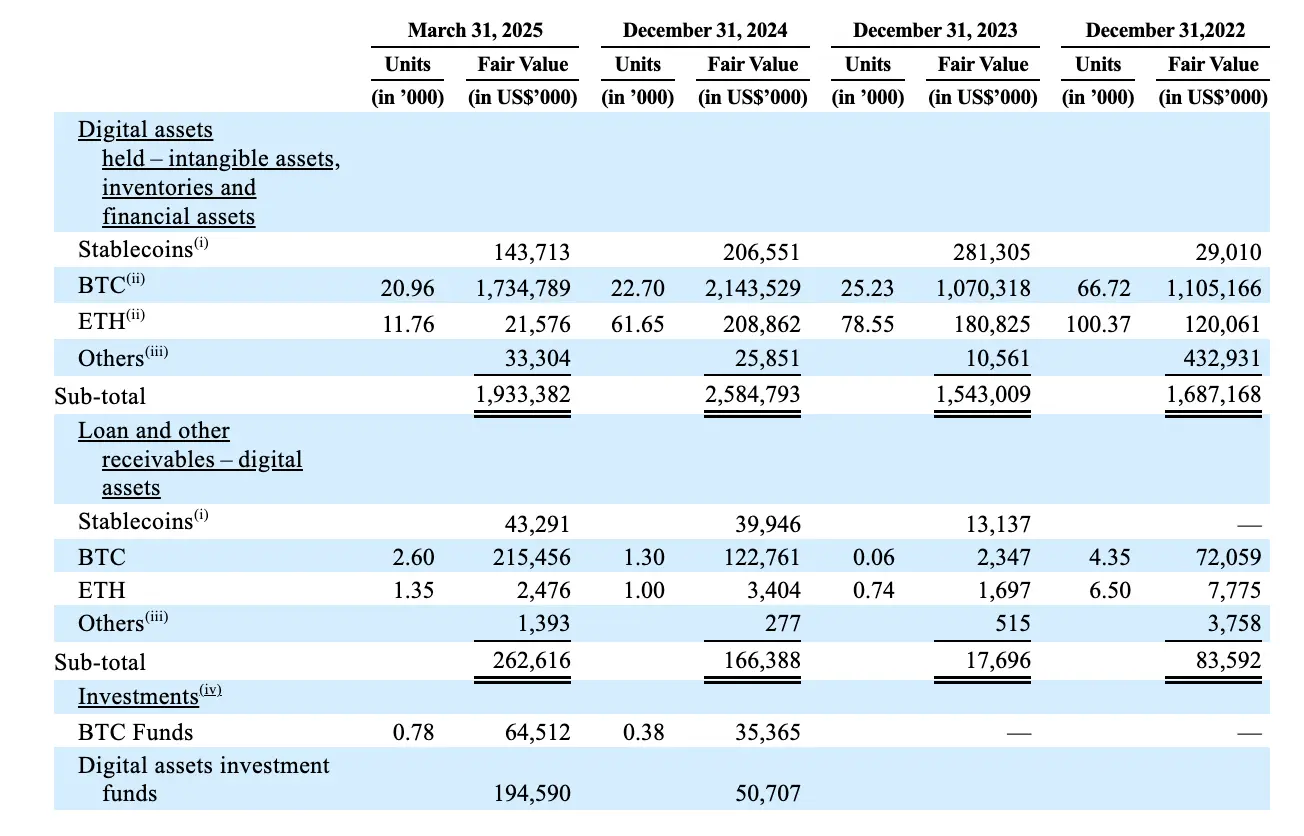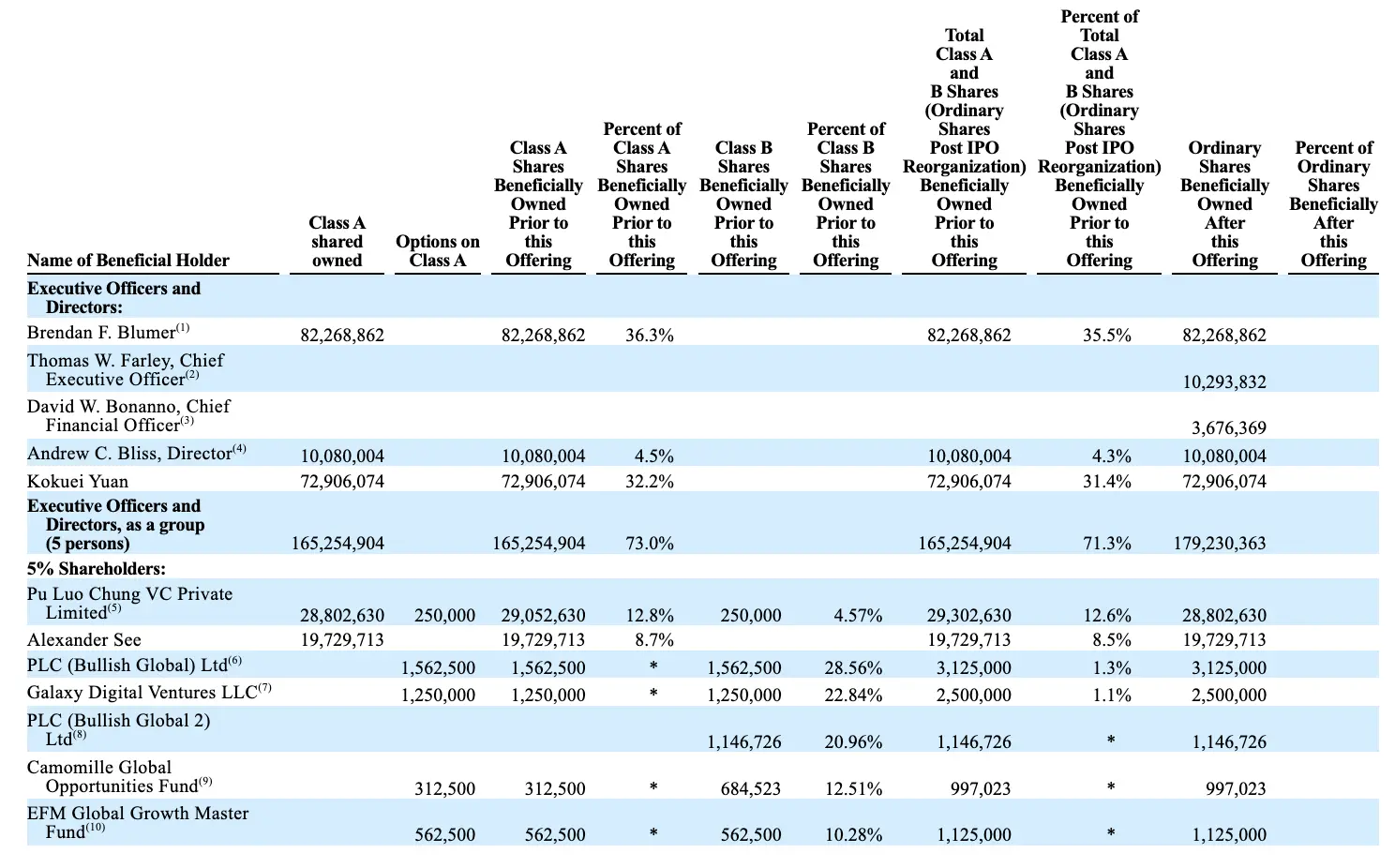Author: Nancy, PANews
Another crypto institution is targeting the U.S. capital market. Recently, Bullish, the crypto trading platform under Block.one, has restarted its IPO plan after failing to go public several years ago. As the regulatory environment in the U.S. becomes increasingly clear and institutional capital accelerates its entry, Bullish, with substantial early Bitcoin reserves and strong traditional capital support, is making another push into the capital markets, but still faces challenges such as revenue pressure and high customer concentration.
Compliance and capital support, three years to restart the listing plan
On July 18, Bullish submitted its IPO documents to the U.S. SEC, planning to list on the New York Stock Exchange with the stock code "BLSH," while the specific number of shares to be issued and the price range have yet to be determined. This IPO is led by several top investment banks, including JPMorgan Chase, Jefferies Financial Group, Citigroup, Cantor Fitzgerald LP, Deutsche Bank, and Société Générale. The SEC has granted underwriters the option to purchase additional shares within 30 days.
"We are now planning to go public because we believe the digital asset industry is at the starting point of the next growth phase. We believe that transparency and compliance are core values of Bullish's operations, which align closely with the public capital markets. We also believe that becoming a listed company will bring key advantages to our business: enhancing credibility with partners, counterparties, and regulators; gaining more capital channels; and having equity currency available for strategic acquisitions." Farley pointed out that the digital asset industry is at a turning point for institutional investors to accelerate their entry, and Bullish has sufficient resources and compliance models to welcome this wave of institutionalization.
In fact, this is not Bullish's first attempt to tap the capital market. As early as 2021, just two months after its establishment, Bullish announced its intention to go public through a SPAC merger with Far Peak Acquisition Corp., with a valuation of up to $9 billion and an intended issue price of $10 per share.
At that time, Bullish also raised about $900 million through PIPE financing (Public Investment in Private Equity), with Far Peak contributing $600 million, and the remaining $300 million coming from heavyweight traditional and crypto capital, including Thiel Capital and Founders Fund under former PayPal CEO Peter Thiel, Nomura Holdings, Louis Bacon, and Galaxy Digital.
The reason Bullish achieved a high valuation at that time was due to the substantial asset support it received from Block.one's investment, including $100 million in cash, 164,000 Bitcoins (valued at about $9.7 billion at the time), and 20 million EOS tokens. However, due to the dramatic changes in the global financial environment in the second half of 2022 and a sharp drop in global market risk appetite, crypto assets also entered a bear market cycle, and Bullish ultimately terminated its SPAC plan in the second half of 2022.
This restart of the IPO is Bullish's keen response to changes in the market environment and strategic adjustment. On one hand, U.S. market regulation is gradually clarifying, with many crypto institutions rushing to advance their listing processes, especially after Circle's successful listing and significant increase, which further boosted market confidence; on the other hand, traditional financial institutions are entering the digital asset field on a large scale, with Bitcoin and Ethereum spot ETFs continuously attracting capital, and the trend of listed companies hoarding coins is accelerating, which has hastened the compliance and institutionalization trend in the crypto industry. Bullish is gradually completing its global compliance layout, having established subsidiaries in places like the Cayman Islands, the U.S., Singapore, Gibraltar, Germany, and Hong Kong, including obtaining a virtual asset trading platform license from the Hong Kong Securities and Futures Commission (SFC) earlier this year.
In addition, Bullish has also received heavyweight support from traditional capital, such as important shareholder Peter Thiel, who is not only one of the most influential investors in Silicon Valley but also the founder of Founders Fund and Thiel Capital, which are among Bullish's earliest and most steadfast investors; CEO Tom Farley himself has rich experience in capital markets, having served as the president of the New York Stock Exchange Group, leading multiple listing projects, and also having served as CEO of the SPAC platform Far Peak, familiar with the complete process of connecting with the public market.
Massive losses cannot stop a strong reserve, with management holding over 60% of shares
As the parent company of EOS, Block.one raised a staggering $4.2 billion through its ICO, and is still one of the private companies with the largest number of Bitcoins. However, EOS has long parted ways with Block.one, officially rebranded as Vaulta, announcing a transformation into a Web3 bank. Block.one is now focused on building a compliant crypto exchange, with Bullish's main businesses divided into the exchange Bullish and the crypto media CoinDesk.
Among them, CoinDesk was acquired by Bullish in November 2023 from Digital Currency Group (DCG), giving it indirect access to over 6 million users, and subsequently launched products like CoinDesk Indices, CoinDesk Data, and CoinDesk Insights, with revenue mainly coming from services such as advertising, sponsorship, event ticket sales, and data subscriptions.
According to the latest submitted IPO documents, as of March 31, 2025, Bullish Exchange's cumulative trading volume has exceeded $12.5 trillion, with spot trading being an important business, where the average daily trading volume in 2024 reached $1.498 billion. In the first quarter of this year, Bullish's spot trading volume for BTC and ETH reached $108.6 billion and $52.3 billion, respectively, representing a year-on-year increase of 36% and 43%. They claim to be among the top ten mainstream digital currency trading platforms in the world.
However, documents also point out that there is a noticeable customer concentration risk in Bullish's core business segment, with a high dependence on large clients (institutional market makers, institutional arbitrageurs, and high-frequency traders), with the top five clients accounting for 69% of the spot trading volume and 83% of the trading revenue.
Moreover, from the profit data, Bullish's financial performance in recent years has shown significant fluctuations. Documents show that Bullish recorded a net loss of $4.246 billion in 2022, achieving only a net profit of $79.56 million by 2024, while in Q1 of this year, a net loss of $348 million has occurred, which is a stark contrast to the net income of $105 million in the same period last year.

Despite the pressure on performance, Bullish still maintains ample liquidity. The prospectus shows that as of March 31, 2025, Bullish holds liquid assets worth over $1.962 billion, including $1.735 billion in Bitcoin, $144 million in USD stablecoins, $28 million in cash, $22 million in Ethereum, and $33 million in other digital assets. Among them, the number of Bitcoins held by Bullish has significantly decreased from about 66,720 at the end of 2022 to about 20,960 as of March 31, 2025, a reduction of more than two-thirds, mainly used for intangible assets, lending, and other receivables and investment funds. Total liabilities are approximately $700 million, including customer deposits, crypto asset liabilities, financing leases, and deferred taxes.

In terms of equity structure, Bullish's control is highly concentrated in the hands of the management team, with several executives collectively holding over 60% of Class A common stock and the vast majority of equity, including Block.one CEO Brendan Blumer holding 36.3% of Class A shares and 35.5% of equity; Thomas holding over 10.29 million shares; CFO David W. Bonanno holding over 3.67 million shares; and executive Kokuei Yuan holding 32.2% of Class A shares and 31.4% of equity. Among external institutional shareholders holding more than 5%, important shareholders include: Pu Luo Chung VC Private Ltd., with 12.6% equity post-IPO; Alexander See with 8.5% equity; PLC (Bullish Global) Ltd with 1.3% equity; and Galaxy Digital Ventures with 1.1% equity.
In summary, leveraging the open regulatory window and the warming of capital markets, Bullish is attempting to seize the passport to enter the mainstream market. However, whether Bullish can truly establish a foothold in the capital markets still poses significant challenges ahead.



